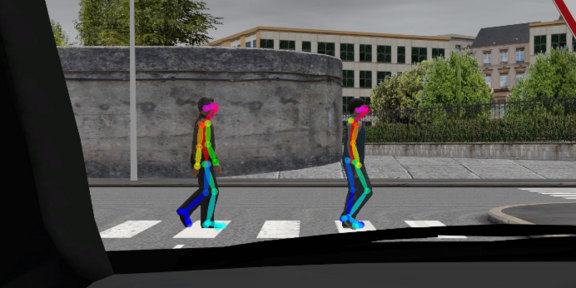Body pose estimation for activity and intention estimation of pedestrians

While the number of people injured and killed in road traffic inside the vehicle is decreasing every year due to technological developments in driver assistance and safety systems, the number of pedestrians injured and killed has remained almost constant over the last years. For reliable pedestrian protection, detection and warning systems need accurate estimates and predictions of pedestrian movements and actions in the vehicle environment. Automated vehicles adjust their trajectory based on predicted pedestrian movements and intentions to avoid endangering pedestrians.
These aspects can only be handled if a large number of exteroceptive sensors can be used to capture the environment with the greatest possible level of detail and detect objects such as people.
The detection of joints and body parts can then provide information about a pedestrian's movement and thus be further used to determine current and future activity.

